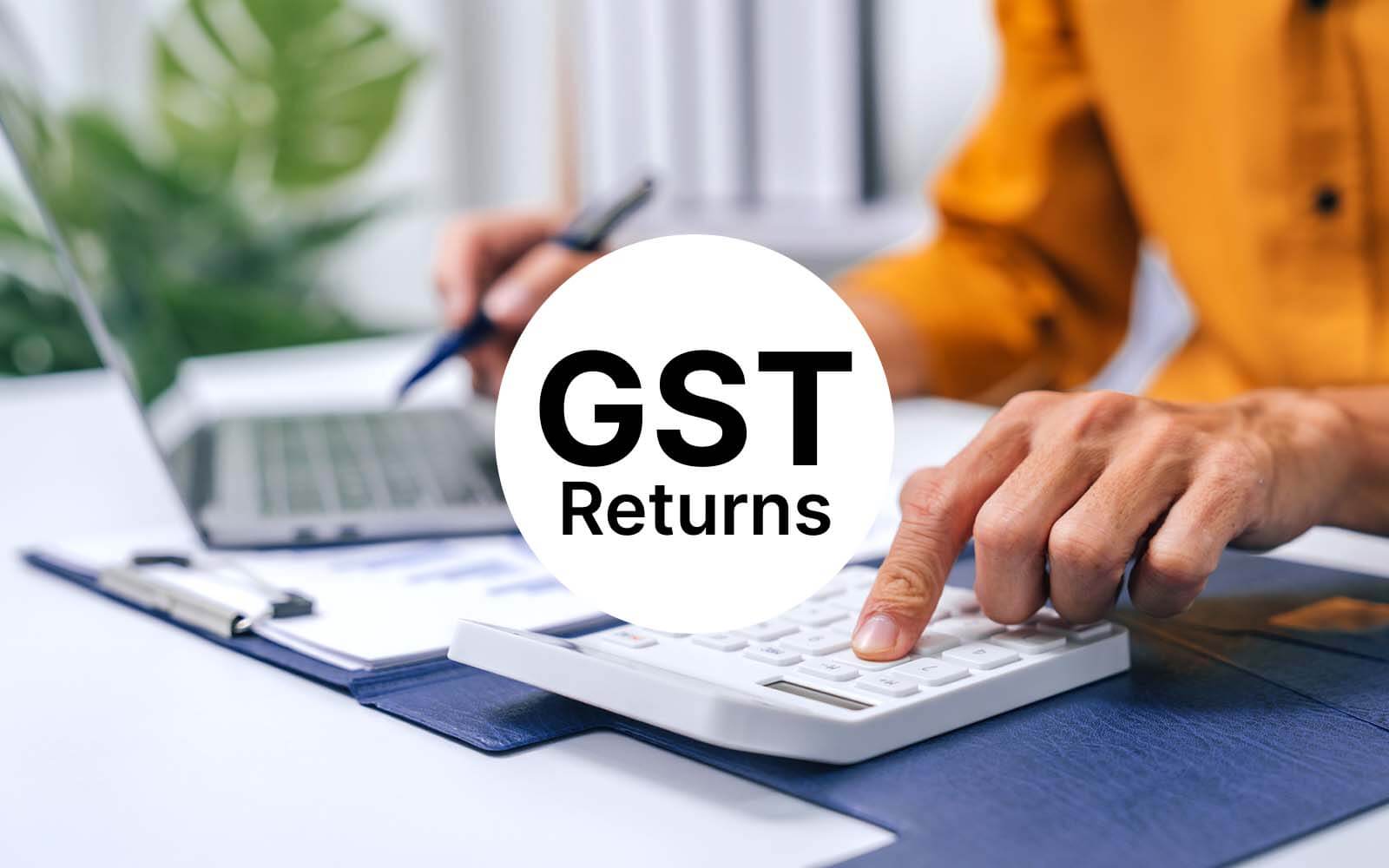For small taxpayers registered under the Quarterly Return Monthly Payment (QRMP) scheme, there is an Invoice Furnishing Facility (IFF) available. It allows them to report their Business-to-business (B2B) sales for the first two months of the quarter. These taxpayers must still make monthly tax payments using Form PMT-06.
Register!
What is a GST Return?
A GST return is a document containing details of all income/sales and/or expenses/purchases that a GST-registered taxpayer (every GSTIN) is required to file with the tax administrative authorities. This is used by tax authorities to calculate net tax liability.
Under GST, a registered dealer has to file GST returns that broadly include:
Purchases || Sales || Output GST (On sales) || Input tax credit (GST paid on purchases)

How many returns are there under GST?
There are a total of 13 returns under the Goods and Services Tax (GST) regime. These returns serve to capture different aspects of a taxpayer’s financial transactions and obligations within the GST framework. However, it’s important to note that not all of these returns apply to every taxpayer. The applicability of these returns depends on the type of taxpayer and the nature of their GST registration. Here is an overview of the 13 GST returns:
How are GST returns filed or submitted?
| Return Form | Description | Frequency | Due Date |
|---|---|---|---|
| GSTR-1 | Details of outward supplies of taxable goods and/or services affected. | Monthly Quarterly (If opted under the QRMP scheme) | 11th of the next month. 13th of the month succeeding the quarter. |
| IFF (Optional by taxpayers under the QRMP scheme) | Details of B2B supplies of taxable goods and/or services affected. | Monthly (for the first two months of the quarter) | 13th of the next month. |
| GSTR-3B | Summary return of outward supplies and input tax credit claimed, along with payment of tax by the taxpayer. | Monthly Quarterly (For taxpayers under the QRMP scheme) | 20th of the next month 22nd or 24th of the month succeeding the quarter*** |
| CMP-08 | Statement-cum-challan to make a tax payment by a taxpayer registered under the composition scheme under Section 10 of the CGST Act. | Quarterly | 18th of the month succeeding the quarter. |
| GSTR-4 | Return for a taxpayer registered under the composition scheme under Section 10 of the CGST Act. | Annually | 30th of the month succeeding a financial year. |
| GSTR-5 | Return to be filed by a non-resident taxable person. | Monthly | 20th of the next month. (Amended to 13th by Budget 2022; yet to be notified by CBIC.) |
| GSTR-5A | Return to be filed by non-resident OIDAR service providers. | Monthly | 20th of the next month. |
| GSTR-6 | Return to be filed by non-resident OIDAR service providers. | Monthly | 20th of the next month. |
| GSTR-5A | Return for an input service distributor to distribute the eligible input tax credit to its branches. | Monthly | 13th of the next month. |
| GSTR-7 | Return to be filed by registered persons deducting tax at source (TDS). | Monthly | 10th of the next month. |
| GSTR-7 | Return to be filed by registered persons deducting tax at source (TDS). | Monthly | 10th of the next month. |
| GSTR-8 | Return to be filed by e-commerce operators containing details of supplies effected and the amount of tax collected at source by them. | Monthly | 10th of the next month. |
| GSTR-9 | Annual return by a regular taxpayer. | Monthly | 10th of the next month. |
| GSTR-9C | Self-certified reconciliation statement. | Annually | 31st December of the next financial year. |
| GSTR-10 | Final return to be filed by a taxpayer whose GST registration is cancelled. | Once, when the GST registration is cancelled or surrendered. | Within three months of the date of cancellation or date of cancellation order, whichever is later. |
| GSTR-11 | Details of inward supplies to be furnished by a person having UIN and claiming a refund. | Monthly | 28th of the month following the month for which statement is filed. |
| ITC-04 | Statement to be filed by a principal/job-worker about details of goods sent to/received from a job-worker. | Annually (for AATO up to Rs.5 crore) Half-yearly (for AATO > Rs.5 crore) | 25th April where AATO is up to Rs.5 crore. 125th October and 25th April where AATO exceeds Rs.5 crore. (AATO = Annual aggregate turnover) |

Does GST have to be paid monthly?
GST is to be paid monthly by regular taxpayers, even those who have opted for quarterly filing of returns, i.e. the QRMP scheme.
However, for small taxpayers, there is an option to choose the composition scheme under GST, if their annual aggregate turnover is up to Rs.1.5 crore for manufacturers/dealers and Rs.50 lakh for pure service providers. They can file a quarterly statement-cum-challan and pay taxes quarterly.
LATE FILING OF GST RETURNS
Mandatory Return Filing
Under the Goods and Services Tax (GST) regime, return filing is mandatory, even if there are no transactions to report. This means that all registered taxpayers must file GST returns regularly, as specified by the government.
Cascading Effect of Late Filing
Late filing of GST returns can have a cascading effect. You cannot file the return for the current period if the return for the previous month or quarter has not been filed. This can result in a backlog of pending returns, making it difficult to comply with GST regulations.
Late Filing Fee
The late filing fee for GSTR-1, for example, is populated in the liability ledger of GSTR-3B filed immediately after the delay. This means that if you delay filing GSTR-1, the late fee will reflect in your GSTR-3B, leading to additional financial liabilities.
Interest on Outstanding Tax
If you have outstanding tax liabilities, interest is charged at a rate of 18% per annum. Interest is calculated by the taxpayer on the amount of outstanding tax to be paid. It is calculated from the day after the due date until the actual date of payment.
Late Fee Charges
The late fee for late filing of GST returns is specified under the Central Goods and Services Tax (CGST) Act and the State Goods and Services Tax (SGST) Act. As per these acts, Rs 20 (Rs 10 for CGST and Rs 10 for SGST) each day for zero GST returns. A fee of Rs 50 (Rs 25 for CGST and Rs 25 for SGST) is charged in all the other circumstances. This can go up to Rs 10,000.This means that if you delay filing a return for an extended period, the late fee can accumulate up to the maximum limit.
Late Fees for GSTR-9/9C
For annual returns like GSTR-9 and GSTR-9C, the late fee is capped at 0.25% of the turnover in the state or Union Territory. This is subject to any relief schemes or changes in late fees provided by the government.



